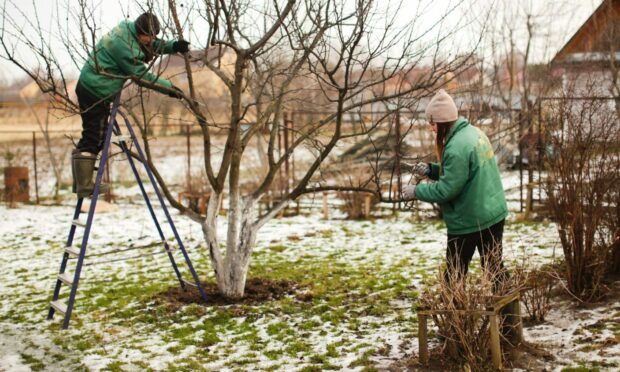I do try but I guess if I’m being honest with myself I’m not the best at remembering things.
I’m sure I never used to be this bad but Christmas past there, I even forgot to give Mrs C a gift that she had actually bought herself for me to give to her! That did feel a new low.
Maybe it’s an age thing or maybe, despite my protests I am just a typical ‘bloke’ after all.
Struggling with the ability to multi-task, which is something that us male species are often told.
At least gardening is easier
Therefore I’m glad with gardening there’s a degree of repetition that helps to make my life easier.
Gardeners work alongside nature’s cycle. We understand jobs outdoors must be done at certain times of the year.
We plant bulbs in autumn for displays the following spring, whilst at the start of August it’s time to look out the hedge cutters from the back of the shed, knowing its safe to carry out the annual clipping after the bird breeding season comes to an end.
After a period of rest we’re now starting to focus our minds on getting our gardens ready for the upcoming growing season, which incidentally is only a matter of weeks away!
The big January job in the garden for me is carrying out any winter pruning on my trees and shrubs.
This doesn’t HAVE to be done before the end of January, the clue is in the title.
It being a winter task you really have until the beginning of March at the latest to carry out any work on woody plants.
Don’t neglect the pruning
January has been a routine instilled in me since my apprentice days. It still serves me well today, helping keep me focused and knowing this essential job is out the way allowing me to start focusing on the glasshouse and seed sowing jobs.
From February at our base at Craigtoun Park we would pot and grow on all the little plug plants that would eventually become the bedding displays in parks and around memorials, as well as those needed for hanging baskets and window boxes in north-east Fife.
Getting the pruning work completed in time was no wee task but as we all know, life in the garden doesn’t pause for us while we are busy with other plans.
It was key, this pruning work, to encourage new and vigorous growth that would reward us with better flowering.
The particular focus at this time of year is on deciduous plants, that is those that shed all their leaves during the colder months.
We look to carry out what can feel like at times surgical work, with wounds having time to heal before the sap, the plants’ blood, begins to flow again with the arrival of spring.
Just now food reserves are being stored in the roots of such plants, containing enough resources to regrow, and balance with the growth above ground after pruning.
In summer these food reserves are contained in the leaves, which won’t be there to help the plant if we’ve just gone and cut them off.
It’s easier with a skeleton shrub
It’s so much easier to see what’s going on when a shrub is in its skeleton state.
It’s clearer to see any dead, damaged or diseased wood which is always the first we should be looking to remove to keep our trees and shrubs in good health.
Also look for any branches that rub against each other as eventually this will become an open wound open to infection from disease.
We then look more closely to the shape of plants. We remove lower branches from trees hanging over paths or spoiling views in to the garden, raising the canopy. This also lets in more light to what’s growing underneath.
We want to create an nice evenly-shaped shrub, so any stems that stretch out can also be shortened back to an outward facing bud or removed completely.
But always make sure you’ve done your homework on just how much pruning the plant you are working on can take.
Careful with the buds
The buds we are pruning are also precious so we want to do our best to get the point where we cut just right.
Too close to it risks damaging the bud and its ability to shoot, yet too far from it will leave a section of branch doing nothing and at risk of dying back.
An angled cut just above the bud so water can run off is just right.
It wouldn’t be the first time if someone has said to me “you gardeners won’t be doing much at this time of year”.
It’s clear what we do now in winter will pay dividends in summer, coincidently the time of year of my lovely wife’s birthday.
Here’s a thought, I wonder if at the time when my shrubs are looking good in July it will help me remember this?



Conversation